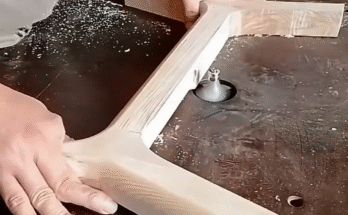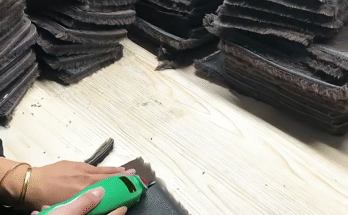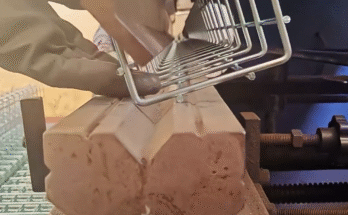Agate, a mesmerizing variety of chalcedony, is renowned for its vibrant colors, intricate banding, and unique patterns. Transforming a raw agate nodule into the polished, perfectly shaped beads or cabochons that adorn a bracelet is a meticulous process, demanding skill, specialized tools, and a deep understanding of the stone’s properties. Whether the agate is naturally colored or has undergone enhancement, the cutting process is fundamental to revealing its hidden beauty and preparing it for stunning jewelry.
Phase 1: Preparation – Sourcing and Initial Assessment
The journey begins with selecting the right raw material and understanding its characteristics.
Step 1: Sourcing Raw Agate
- Nodule Selection: Agate typically forms as nodules or geodes within volcanic rock. Lapidaries (gemstone cutters) carefully select raw agate nodules based on their potential for desirable color, banding patterns, size, and overall quality.
- Initial Cleaning: The raw nodules are often cleaned to remove external dirt, clay, or rock matrix, allowing for a better visual assessment of the stone’s potential.
- Sun Drying (Optional but Recommended): Some large agate nodules are sun-dried for several weeks or months to remove trapped moisture. This can help prevent cracking during subsequent cutting and processing.
Step 2: Assessment and Planning
- Visual Inspection: The rough agate is thoroughly inspected for cracks, inclusions, or flaws that might affect the final product.
- Strategic Planning: Based on the agate’s natural banding, color distribution, and any visible imperfections, the lapidary plans the optimal way to cut the stone to maximize its beauty and yield. This might involve deciding where to make the initial cuts to best showcase a specific pattern or color.
- Color Enhancement (If Applicable): If the agate is to be artificially colored (a common practice for some agates to enhance natural hues or introduce new ones), this process typically occurs before final shaping and polishing, as the porous nature of agate allows it to absorb dyes. This involves:
- Cleaning: Boiling the agate in a strong solution (e.g., sodium carbonate) to remove oils and impurities.
- Soaking in Chemical Solutions: Immersing the agate in various chemical solutions (e.g., iron nitrate for reds/browns, cobalt salts for blues, potassium chromate for yellows) for extended periods (weeks to months), often at controlled temperatures.
- Heating: Applying heat treatment (e.g., in an oven) to fix the dye within the stone, causing chemical reactions that produce the desired color. This process is highly specialized and requires careful control to avoid damaging the stone.
Phase 2: Shaping – From Rough Nodule to Bracelet Components
This phase involves the primary cutting and shaping of the agate into forms suitable for bracelet components, such as beads or cabochons.
Step 3: Initial Slicing (Slab Sawing)
- Diamond-Tipped Saw: Large agate nodules are cut using a specialized rock saw fitted with a diamond-tipped blade. These saws are typically wet saws, meaning water or a cutting oil is continuously fed to the blade to cool it and flush away abrasive dust.
- Creating Slabs: The agate is carefully fed into the saw blade to create flat slices or “slabs” of a desired thickness. The thickness will depend on whether the final product will be beads, cabochons, or other shapes.
- Safety First: Eye protection, dust masks, and proper ventilation are crucial due to the fine dust and potential for flying particles.
Step 4: Rough Shaping (Preforming)
- Trimming and Dicing: The slabs are then further cut into smaller, more manageable pieces using a trim saw, often into squares or rough shapes that approximate the final bead or cabochon.
- Grinding Wheels: These rough pieces are taken to grinding wheels (lapidary wheels) coated with industrial diamonds of various grits (e.g., 260 grit for initial shaping). Water is constantly used to lubricate the wheel and cool the stone, preventing heat buildup that could crack the agate.
- Forming Basic Shapes: The artisan grinds away excess material, beginning to form the general shape of the bead (e.g., a rough sphere, oval, or cylinder) or the desired cabochon outline. This step is crucial for removing flaws and establishing the basic geometry.
Step 5: Drilling (for Beads)
- Diamond Drill Bit: If the agate pieces are destined to be beads, holes are drilled through them using a diamond-tipped drill bit. This is typically done under a constant stream of water to cool the drill bit and the stone, preventing overheating and cracking.
- Two-Sided Drilling: For accurate and clean holes, beads are often drilled halfway from one side, then flipped and drilled from the opposite side to meet in the middle.
Phase 3: Refinement and Polishing – Revealing the Agate’s Luster
This phase focuses on smoothing, refining, and bringing out the natural luster of the agate.
Step 6: Fine Grinding and Smoothing
- Gradual Grit Progression: The shaped agate pieces are progressively ground on finer grit diamond wheels (e.g., 600 grit, then 1200 grit, etc.). Each finer grit removes the scratches left by the previous coarser grit, gradually smoothing the surface. Water is continuously used throughout this process.
- Tumbling (for Beads): For large quantities of beads, a rock tumbler is often used. Beads are placed in a barrel with water and various abrasive grits (silicon carbide or diamond grit). The tumbling action grinds and smooths the beads over several weeks, progressing from coarse to fine grits.
Step 7: Pre-Polishing
- Pre-Polishing Wheels: After fine grinding, the agate pieces are moved to pre-polishing wheels, often using a finer abrasive compound (e.g., 3,000 to 8,000 grit diamond paste or cerium oxide). This step prepares the surface for the final polish, removing any remaining microscopic scratches.
Step 8: Final Polishing
- Polishing Laps/Wheels: The agate is polished on a soft polishing lap or wheel (e.g., felt, leather, or specialized polishing pads) using a very fine polishing compound (e.g., 14,000 to 50,000 grit diamond paste, cerium oxide, or tin oxide).
- Burnishing (for some finishes): For certain types of agate or desired finishes, an agate burnisher (a tool with a smooth agate tip) can be used to rub the surface, imparting a high luster.
- Achieving Luster: This final step brings out the vibrant colors, intricate banding, and natural glassy luster characteristic of agate.
Step 9: Cleaning and Assembly
- Thorough Cleaning: The finished agate components are thoroughly cleaned to remove any residual polishing compounds or dust. This might involve ultrasonic cleaning or washing with soap and water.
- Quality Inspection: Each component is inspected for quality, ensuring smooth surfaces, well-formed shapes, and consistent holes (for beads).
- Bracelet Assembly: The polished agate beads or cabochons are then ready to be strung onto elastic cord, wire, or incorporated into metal settings to create the final bracelet design.
The entire process, from raw stone to finished bracelet component, highlights the remarkable transformation of agate, making it a truly radiant addition to any jewelry collection.



